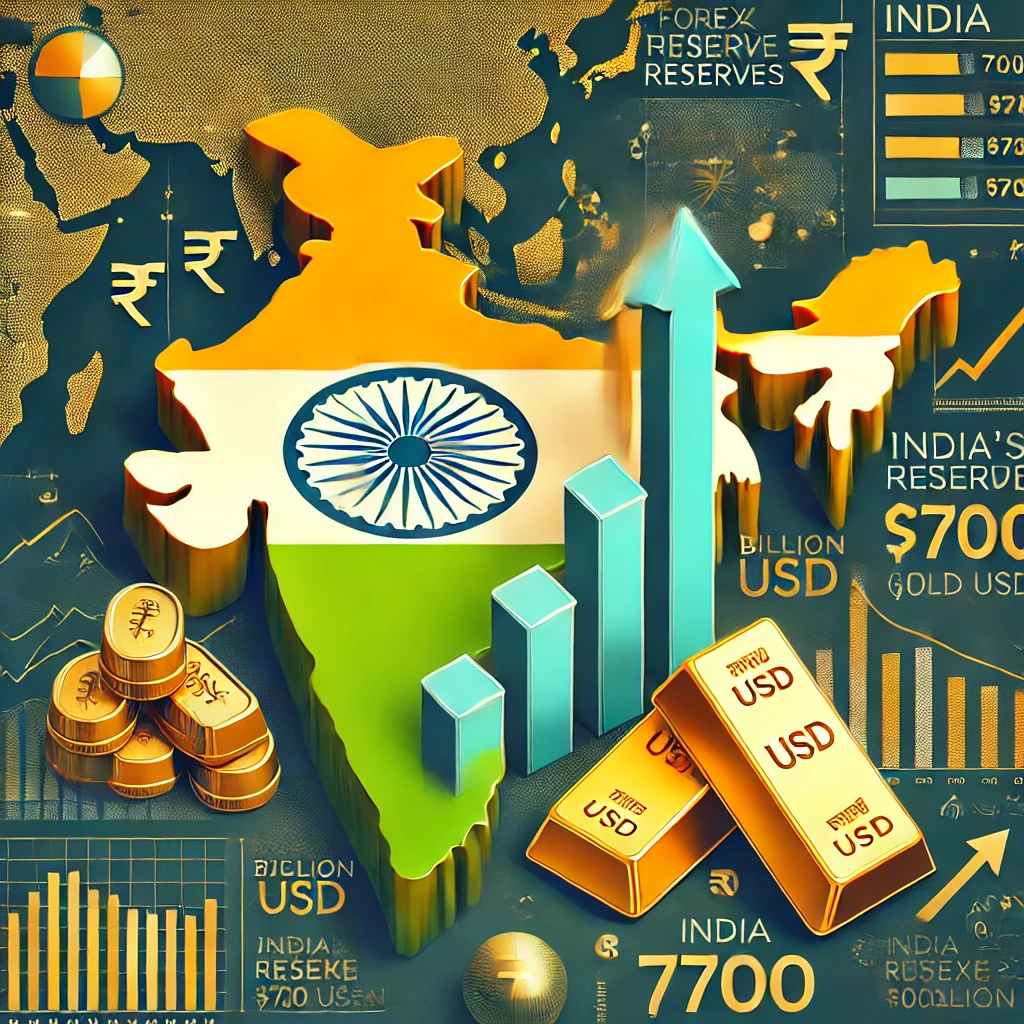India’s Forex Reserves Cross $700 Billion: A Historic Economic Milestone
India has made a significant leap in its economic journey by crossing the $700 billion mark in foreign exchange reserves, joining the elite group of nations that have achieved this feat. As the fourth country to reach this milestone, India’s growing reserves highlight the country’s robust economic policies, global trade surpluses, and strategic financial management.
What Contributes to India’s Forex Reserves Growth?
India’s foreign exchange reserves consist of foreign currency assets, gold reserves, Special Drawing Rights (SDRs), and the reserve position in the International Monetary Fund (IMF). Several factors have contributed to this surge:
- Increase in Exports: India’s exports, particularly in sectors like IT services, pharmaceuticals, and textiles, have seen substantial growth. This has strengthened the country’s balance of payments and contributed to the rise in reserves.
- Foreign Direct Investments (FDI): India’s appeal as an investment destination has led to an influx of foreign capital. Multinational companies continue to invest in sectors like technology, manufacturing, and renewable energy, boosting reserves.
- Rupee Stability: The Reserve Bank of India (RBI) has carefully managed the rupee’s value, preventing drastic depreciation. This stability attracts foreign investors and traders to hold reserves in India, further increasing forex holdings.
- Global Financial Environment: A favorable global economic environment, coupled with India’s relatively strong recovery from the pandemic, has aided in maintaining a healthy flow of foreign funds into the country.
Why Are Forex Reserves Important?
Foreign exchange reserves are crucial for maintaining a nation’s financial stability, especially in times of global economic uncertainty. Reserves serve multiple purposes:
- Currency Stability: Forex reserves allow central banks to intervene in foreign exchange markets to stabilize the national currency.
- Economic Credibility: High reserves enhance a country’s creditworthiness in international markets, providing more favorable borrowing conditions.
- Crisis Buffer: In times of economic shocks or downturns, reserves act as a buffer to ensure that essential imports (like oil) and external debt obligations can be met without compromising the nation’s financial health.
The Global Standing
By crossing the $700 billion mark, India now ranks fourth globally in terms of foreign exchange reserves. The other countries in this exclusive group include China, Japan, and Switzerland. This milestone not only elevates India’s stature in the global economic order but also strengthens its negotiating power in international trade and financial agreements.
Future Outlook
India’s forex reserves are expected to grow further, driven by continued investments, global partnerships, and increasing exports. The government’s focus on self-reliance, particularly through initiatives like Atmanirbhar Bharat, and the promotion of Make in India are likely to create new opportunities for reserve growth.
In conclusion, India’s achievement of crossing $700 billion in forex reserves signifies a new era of financial resilience and stability. As the country continues to expand its global influence, these reserves will play a vital role in ensuring sustained economic growth and global competitiveness.
#IndiaForexReserves #700Billion #IndianEconomy #EconomicStability #ForexMilestone #ForeignInvestment #ExportGrowth #CurrencyStability #FinancialStrength #RBIMilestone







